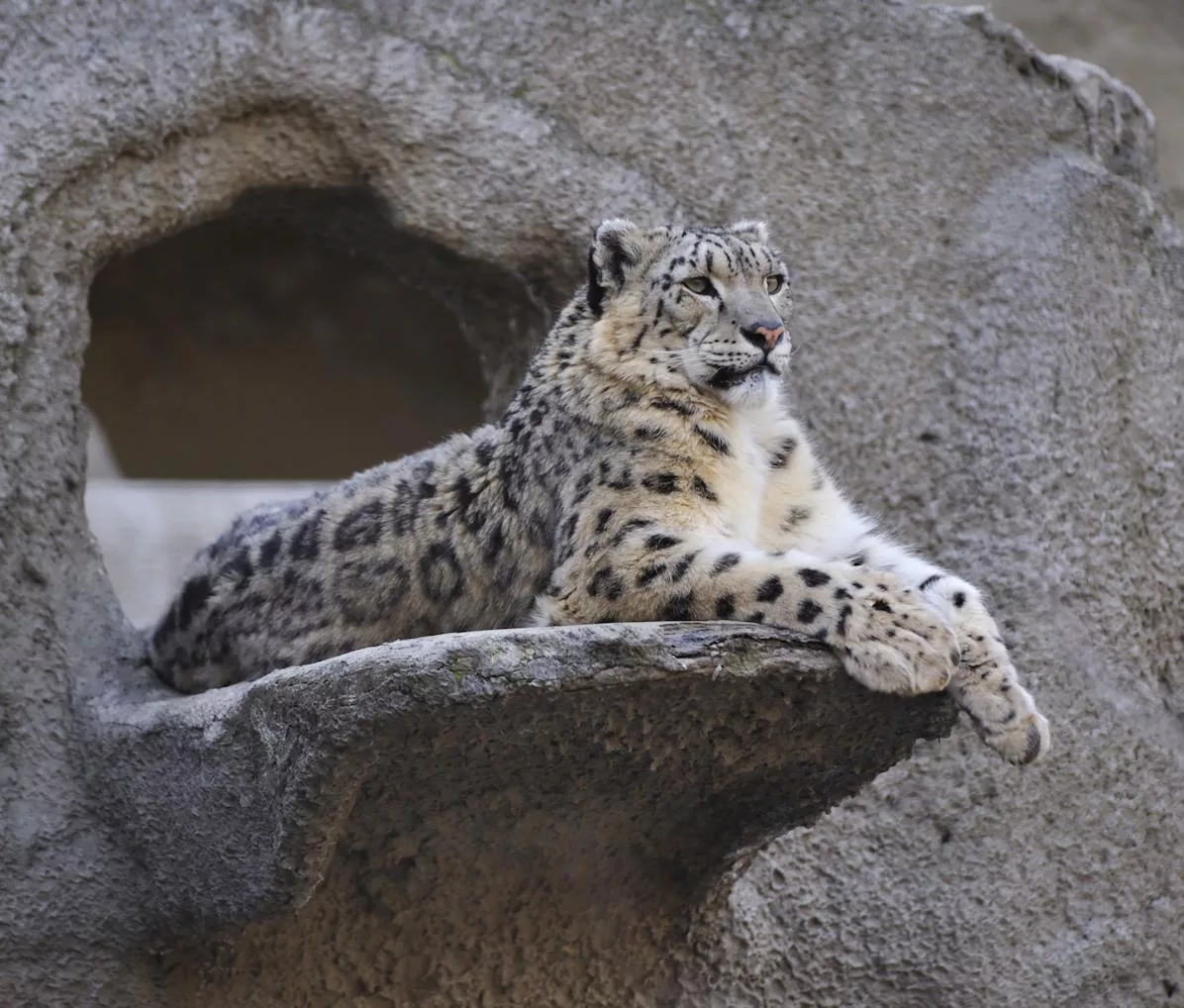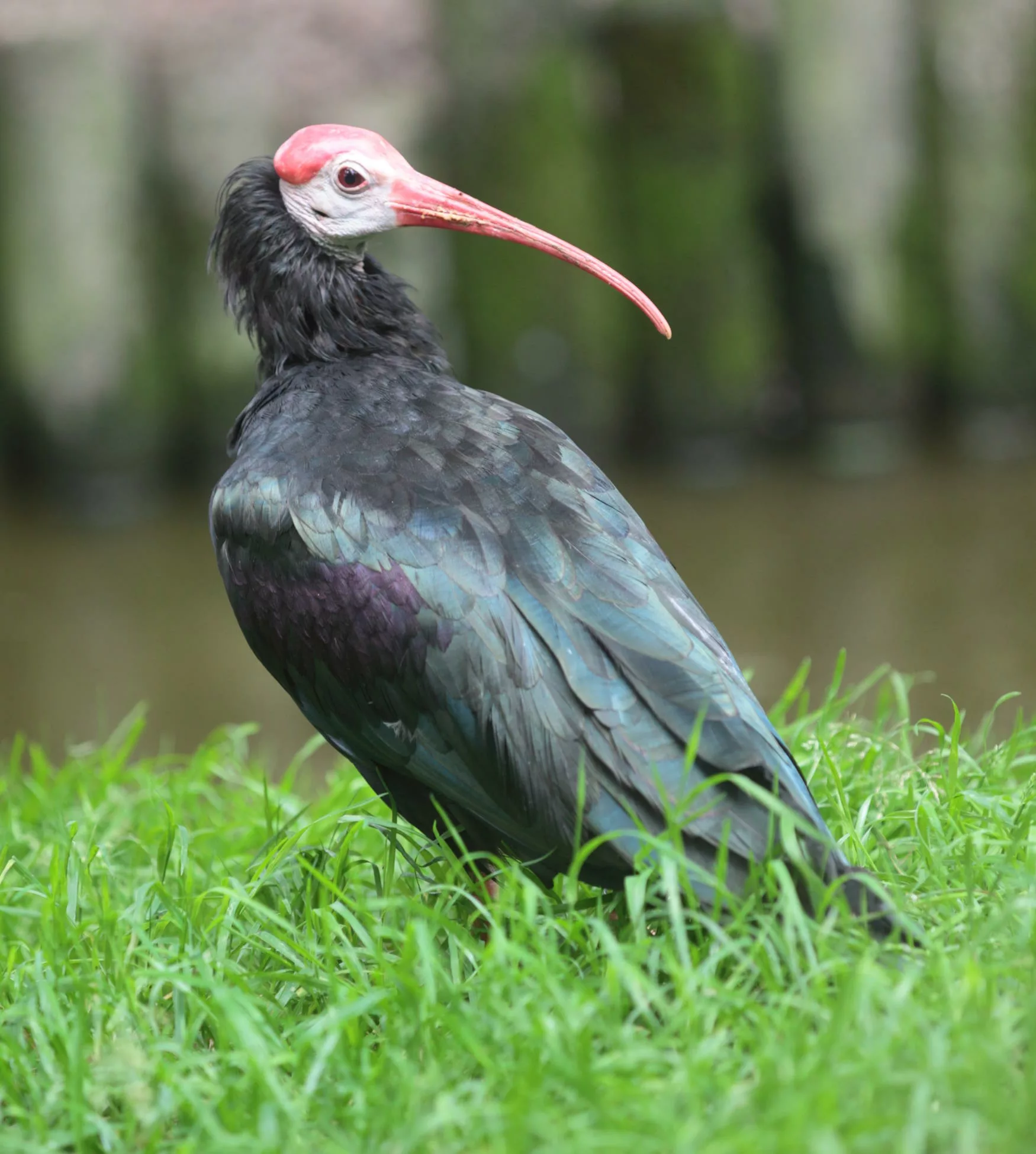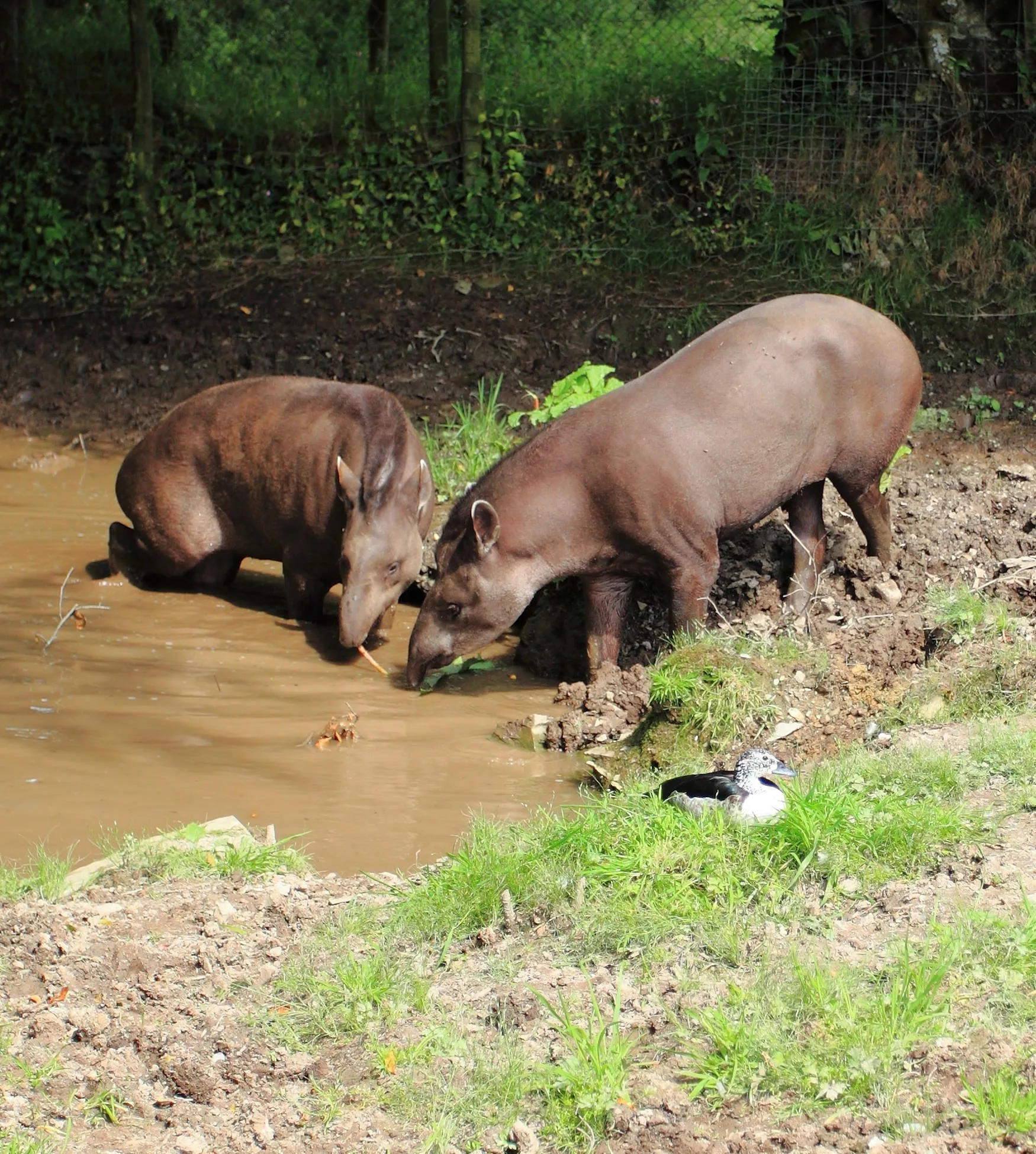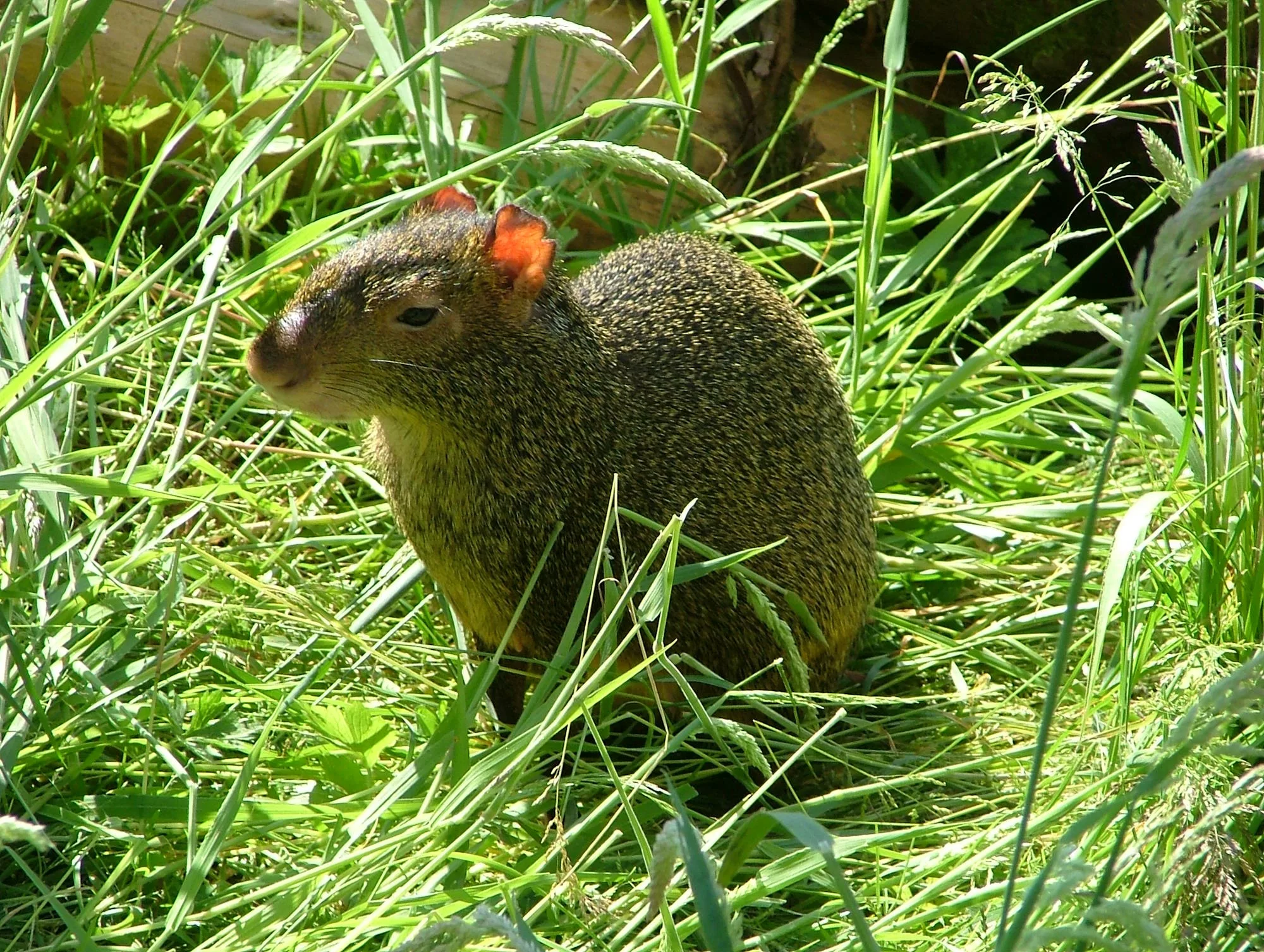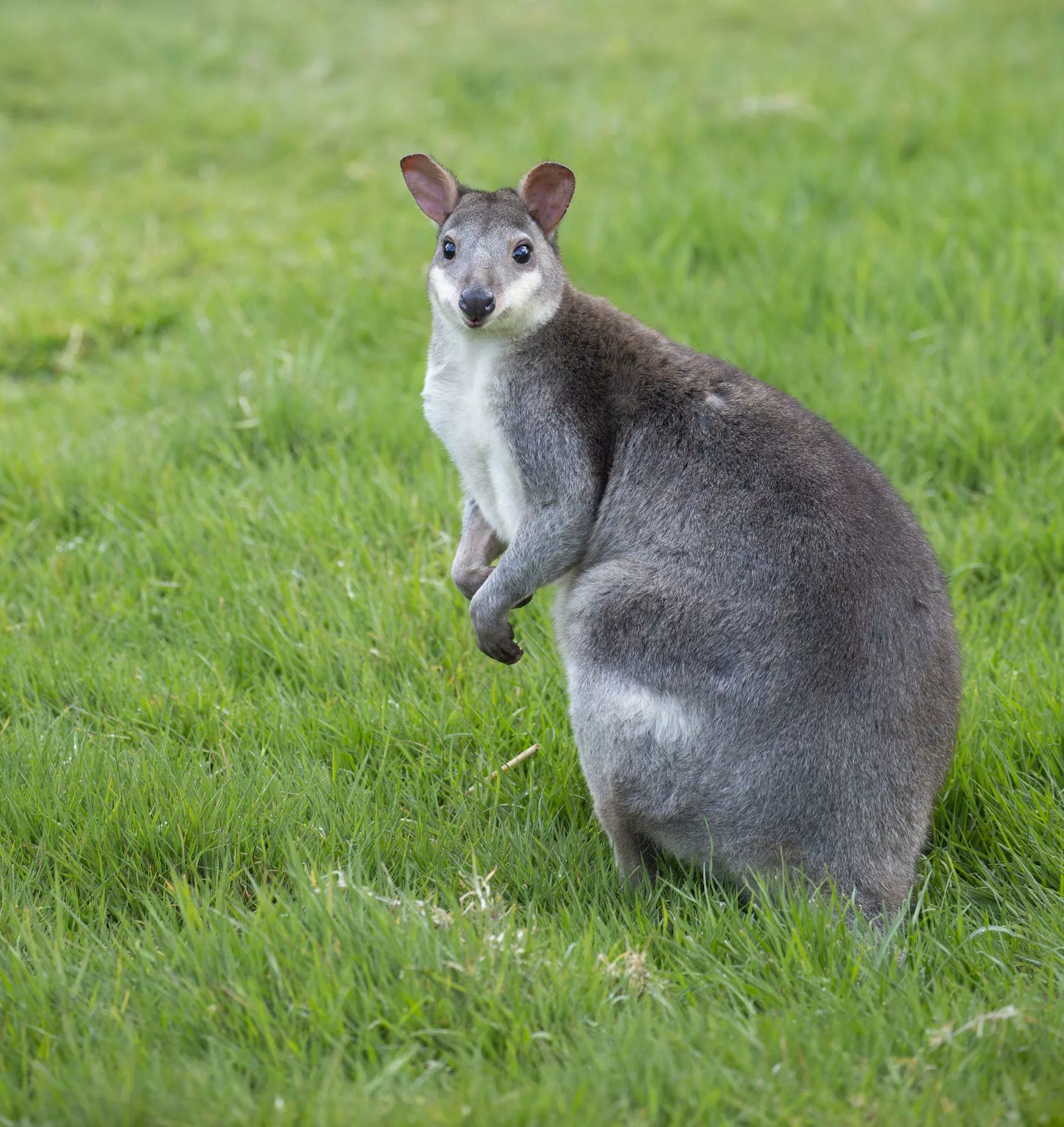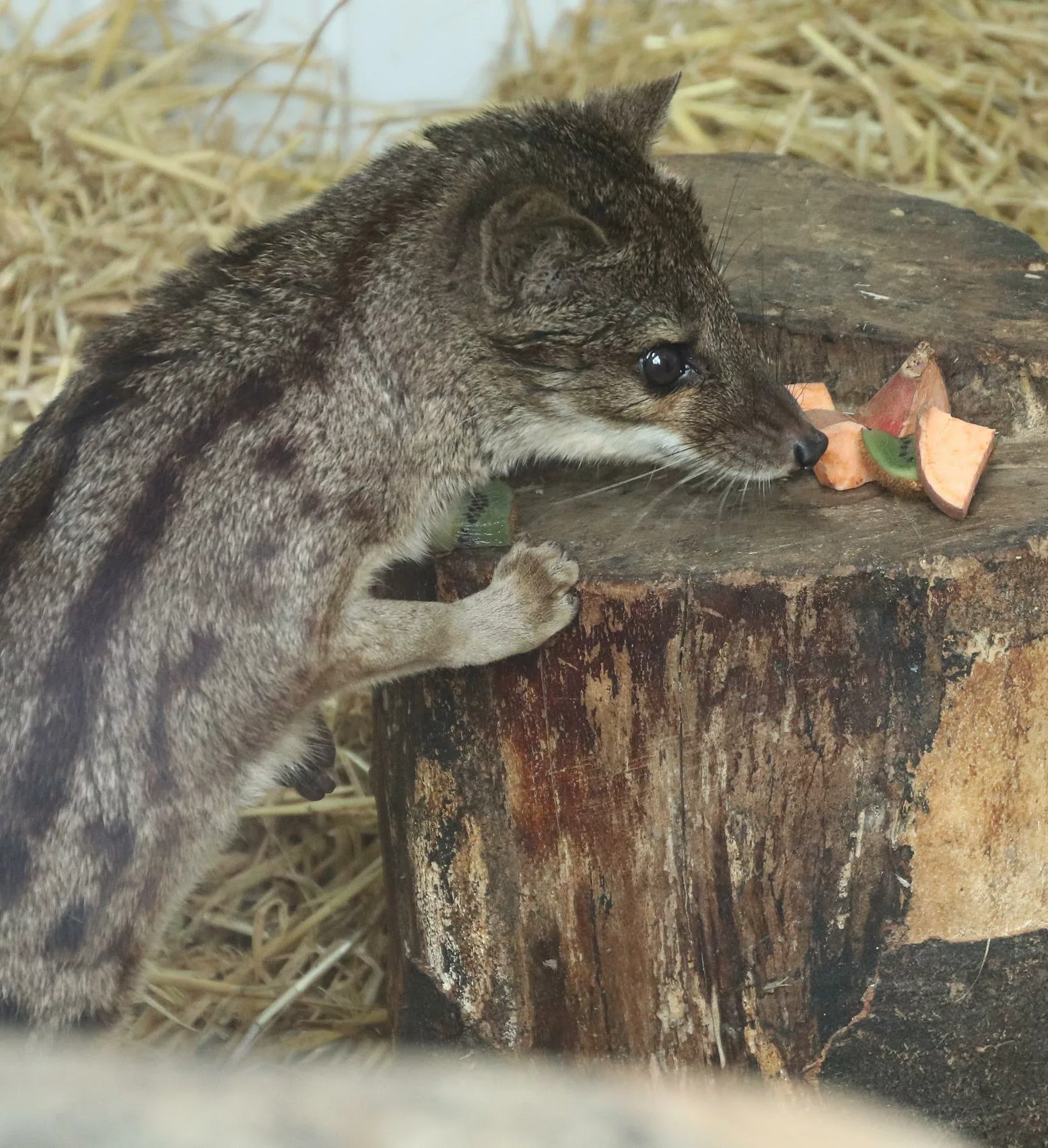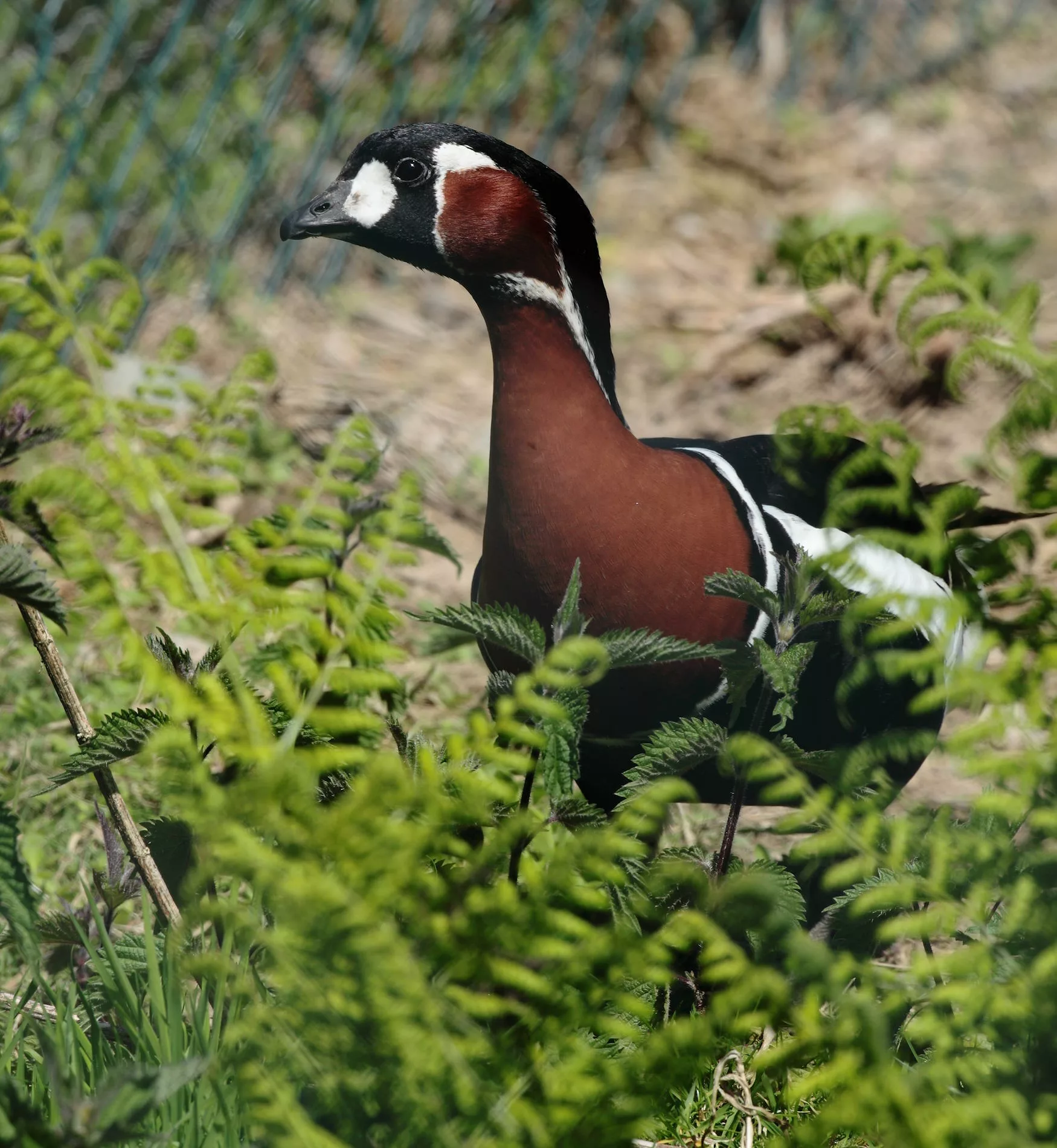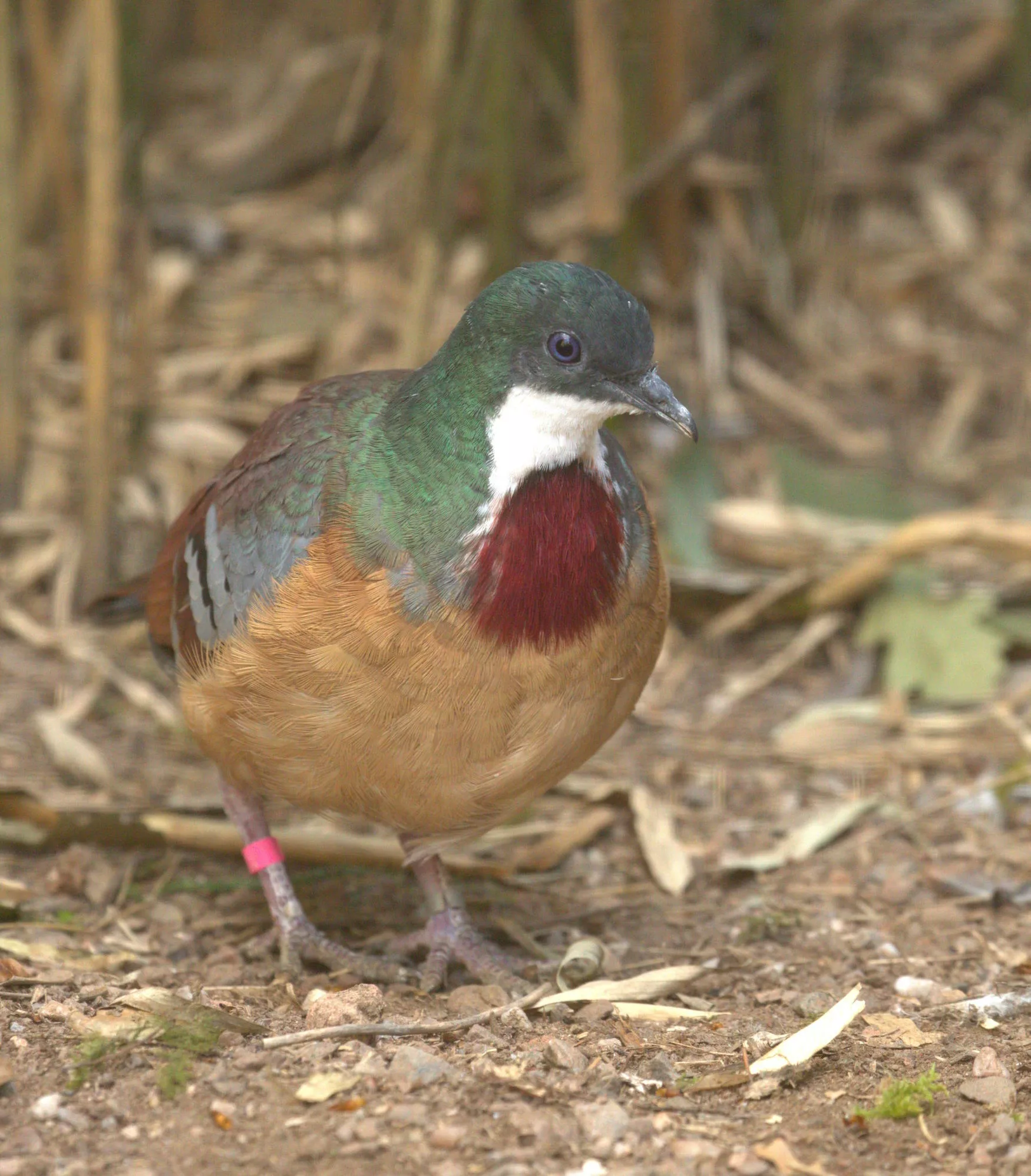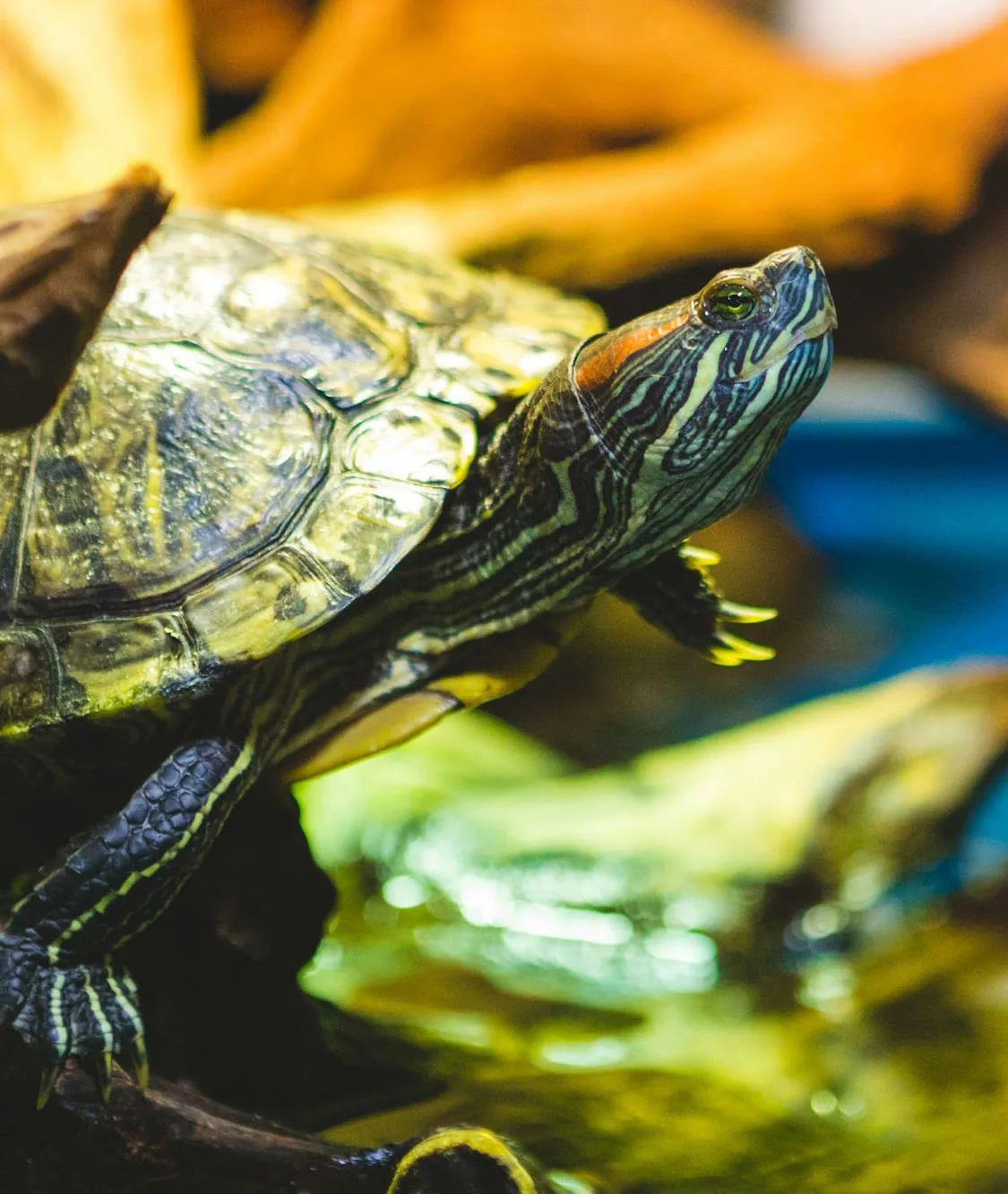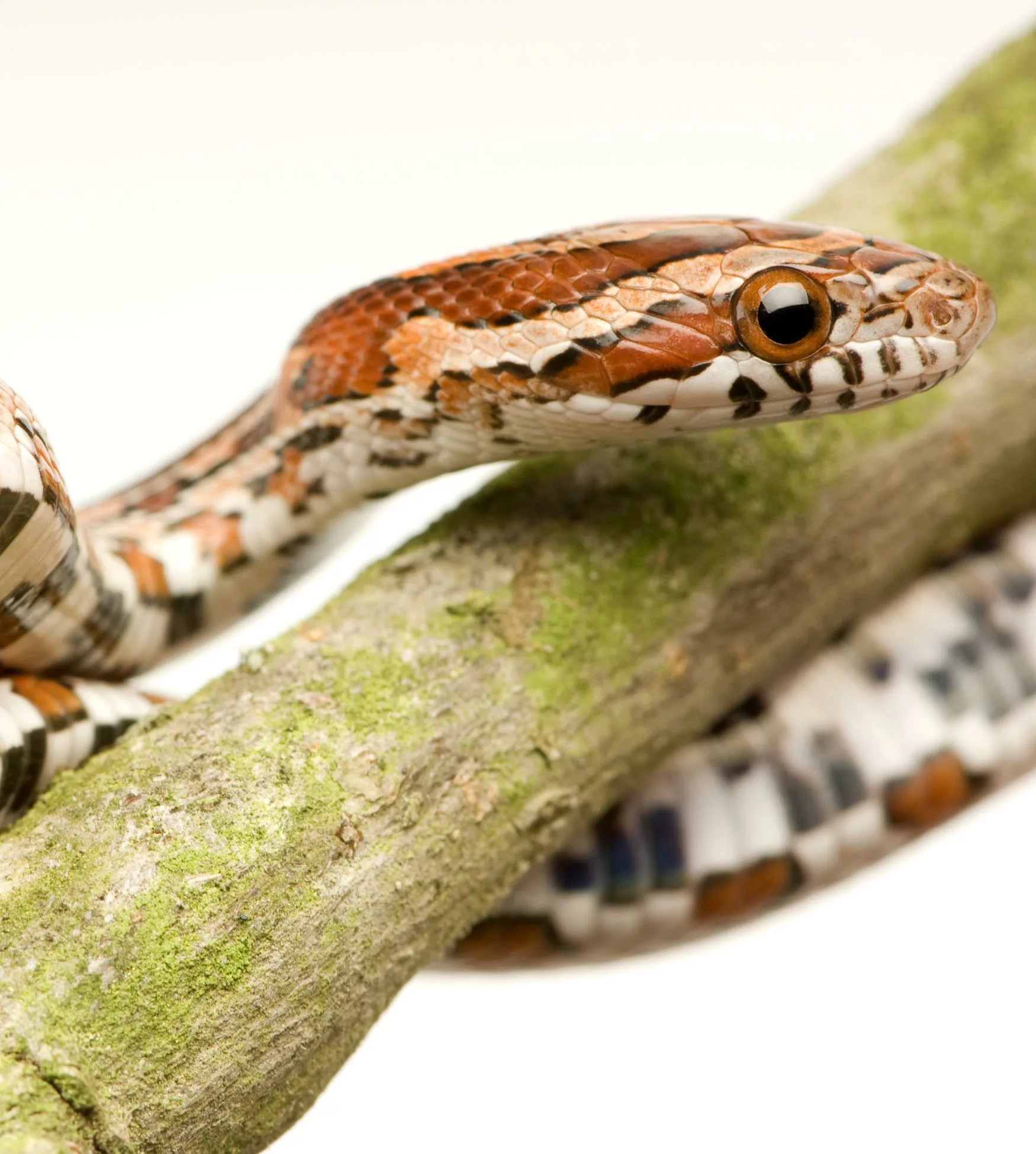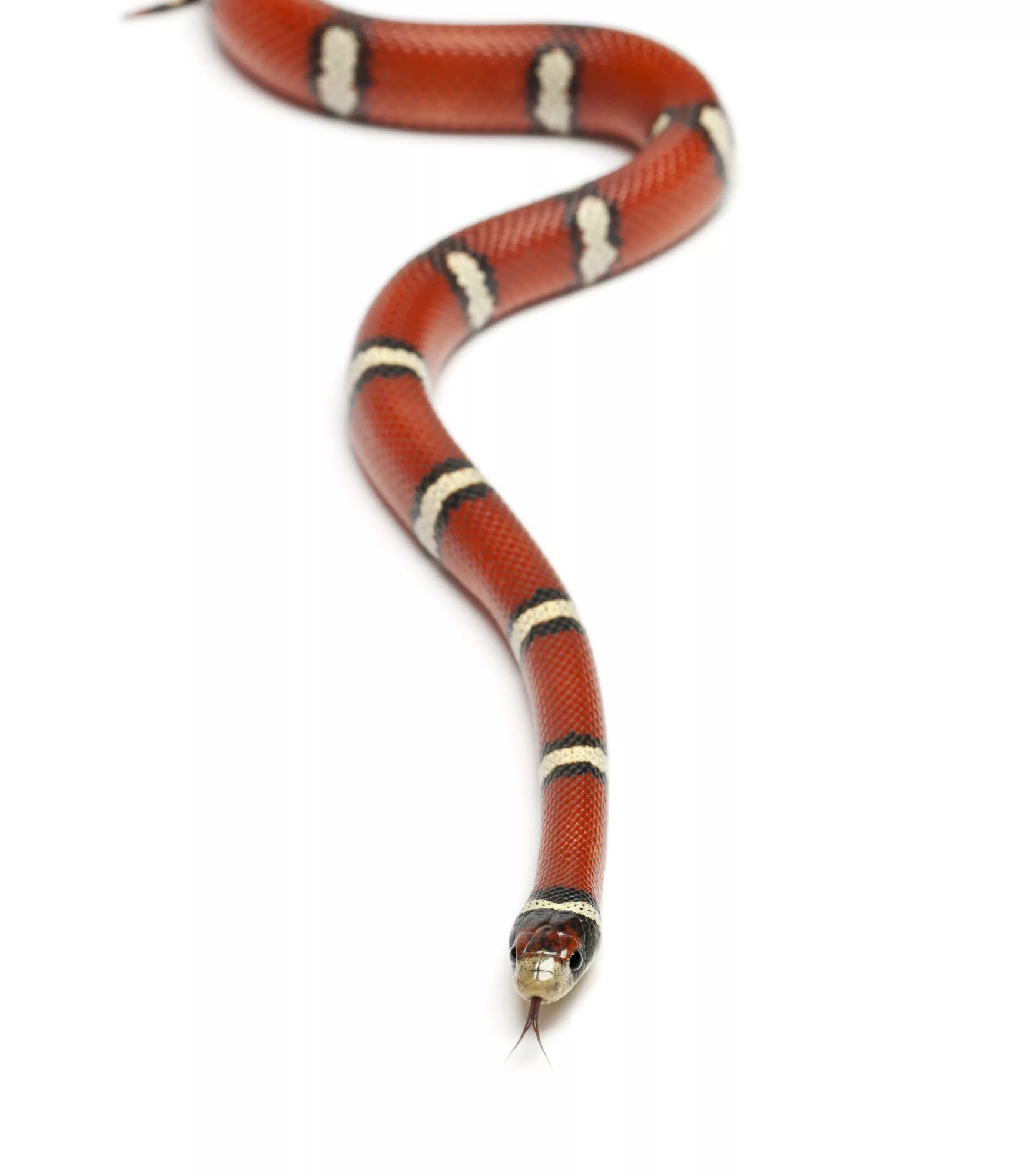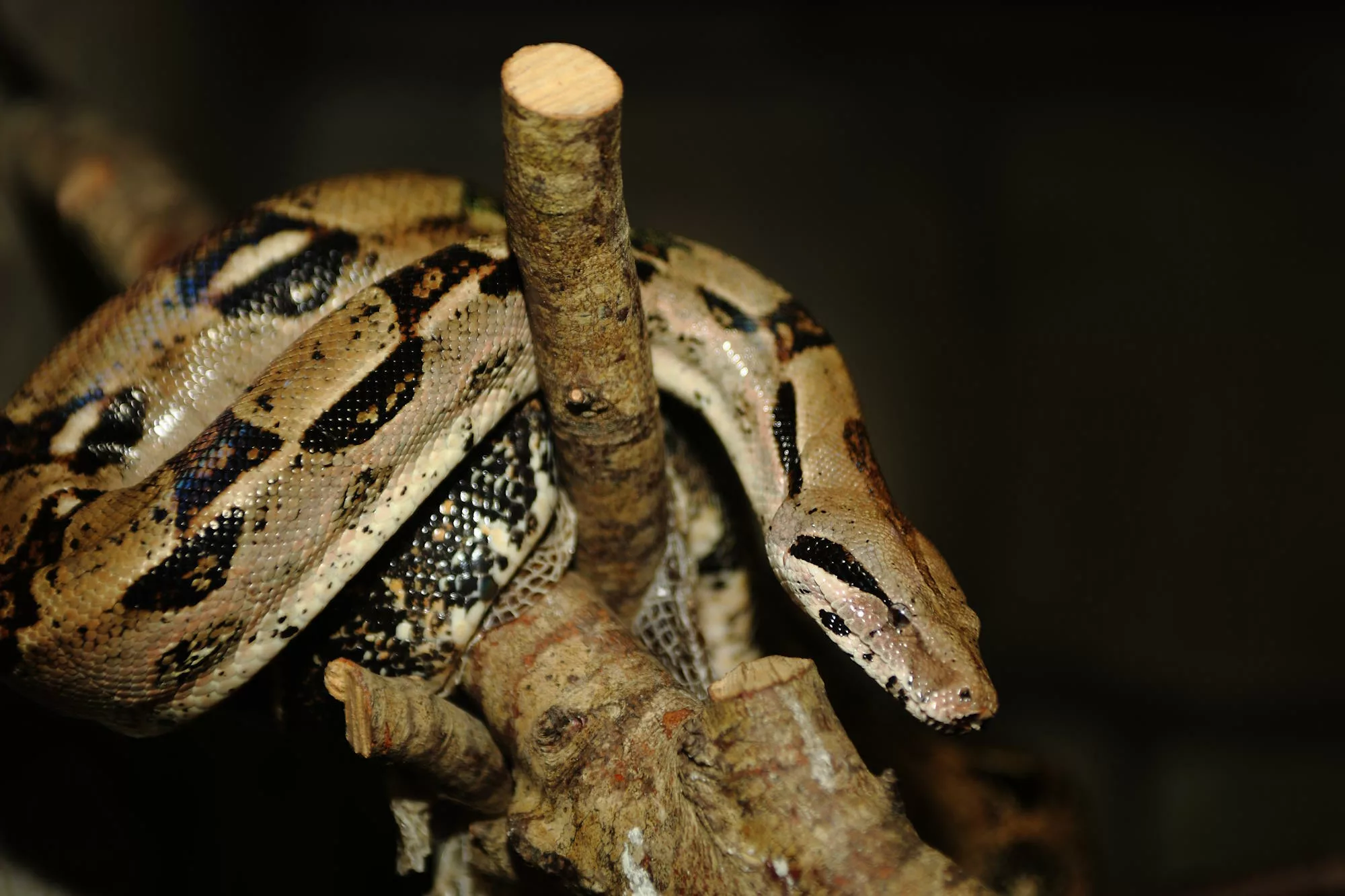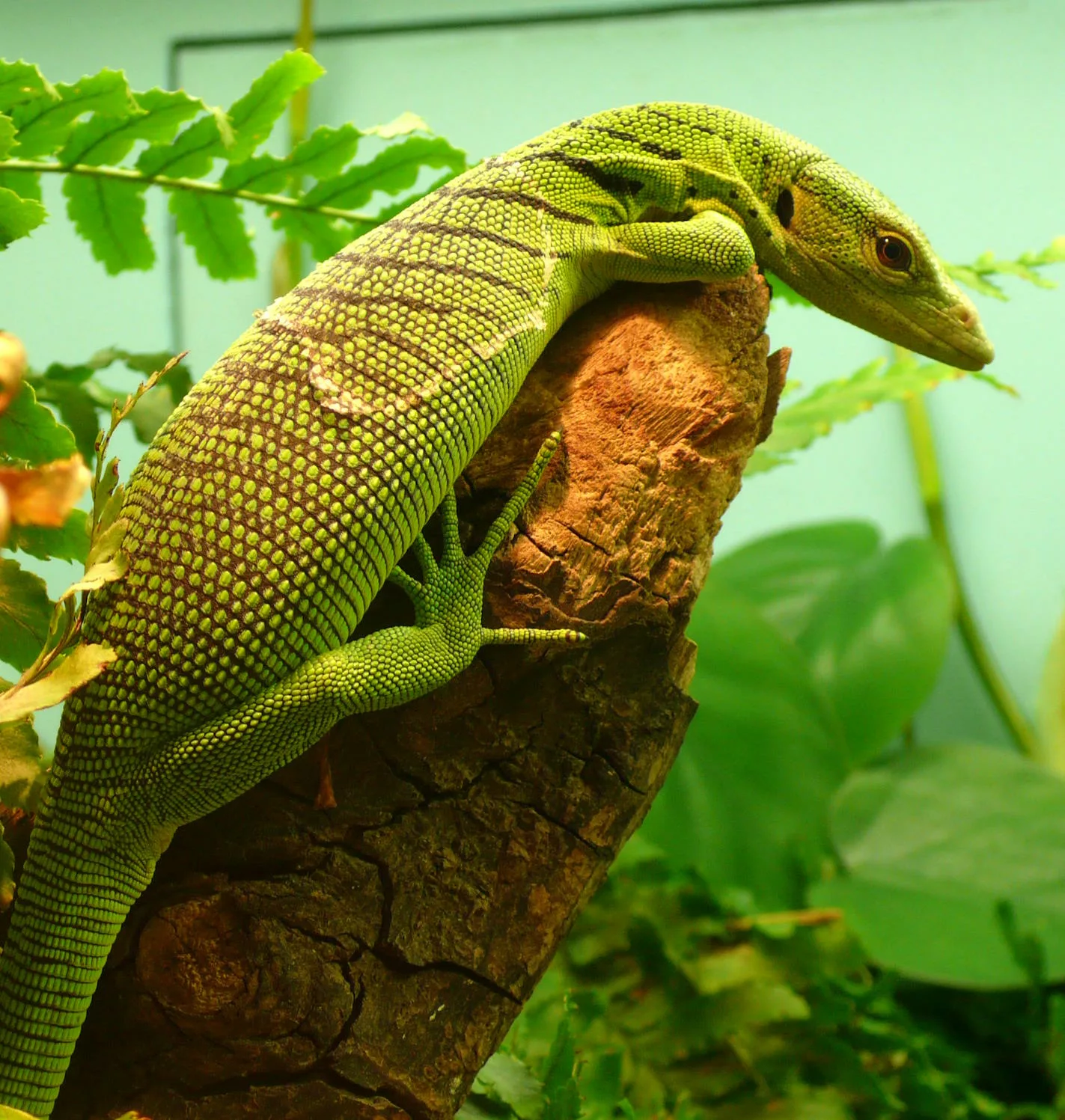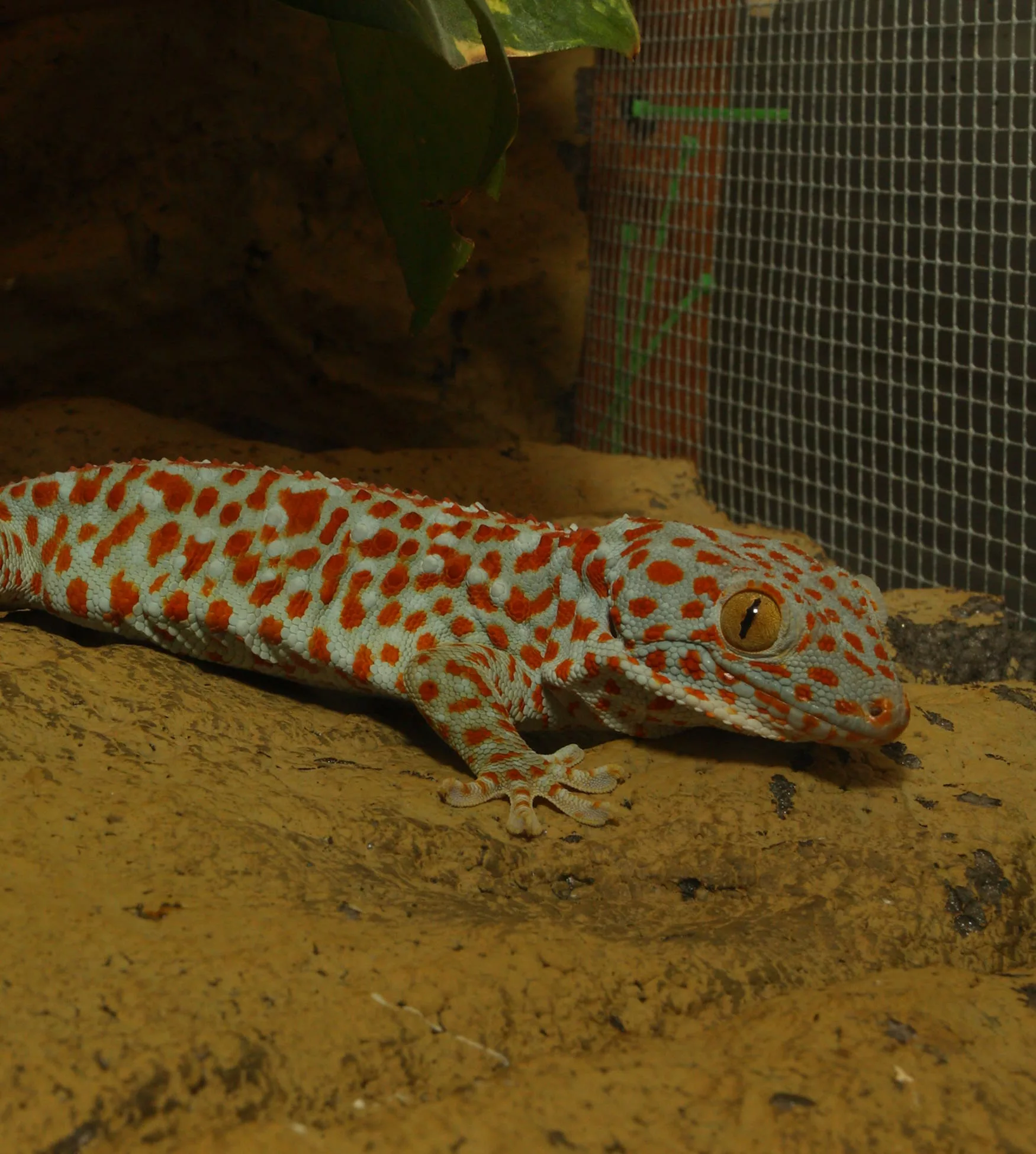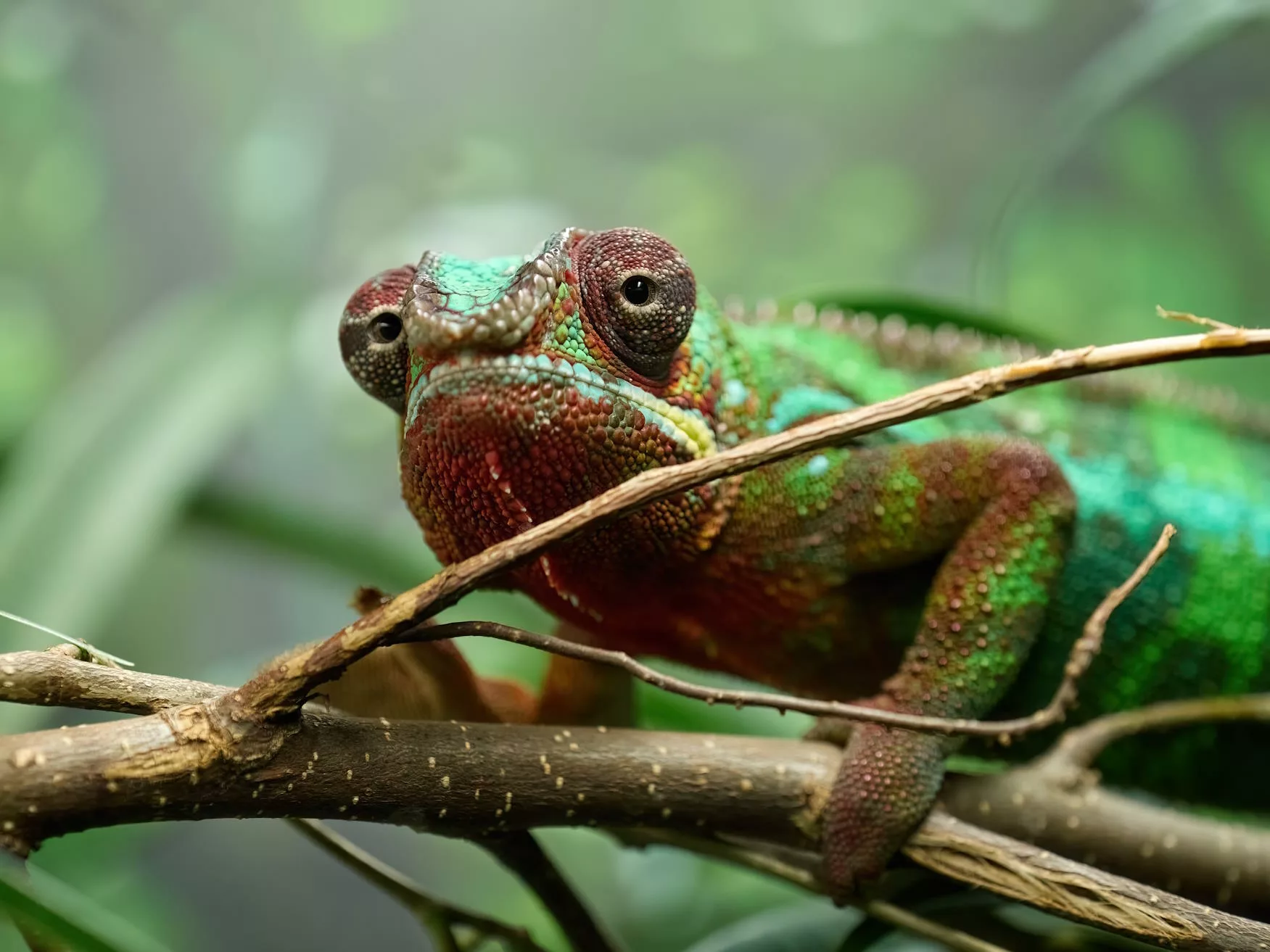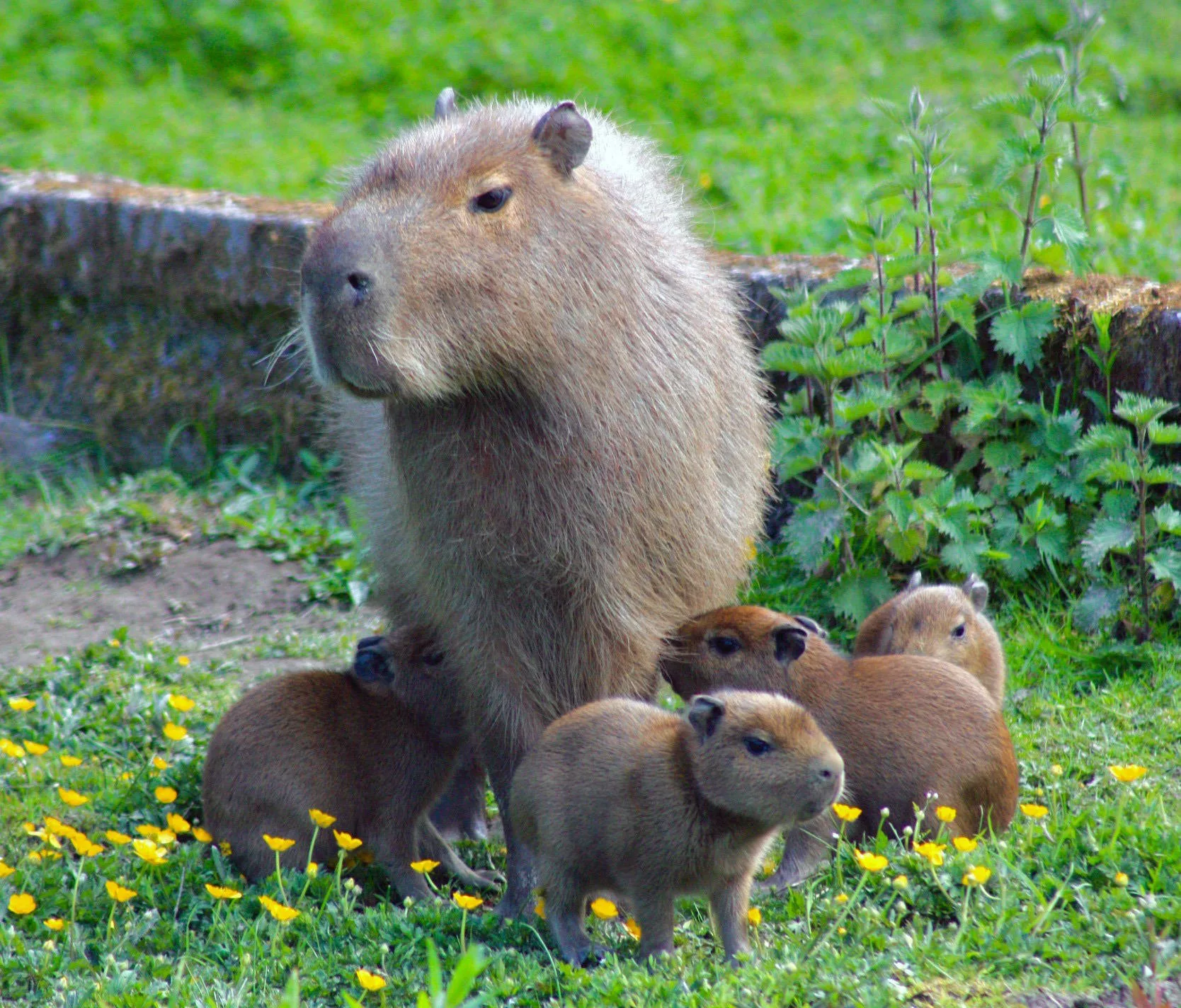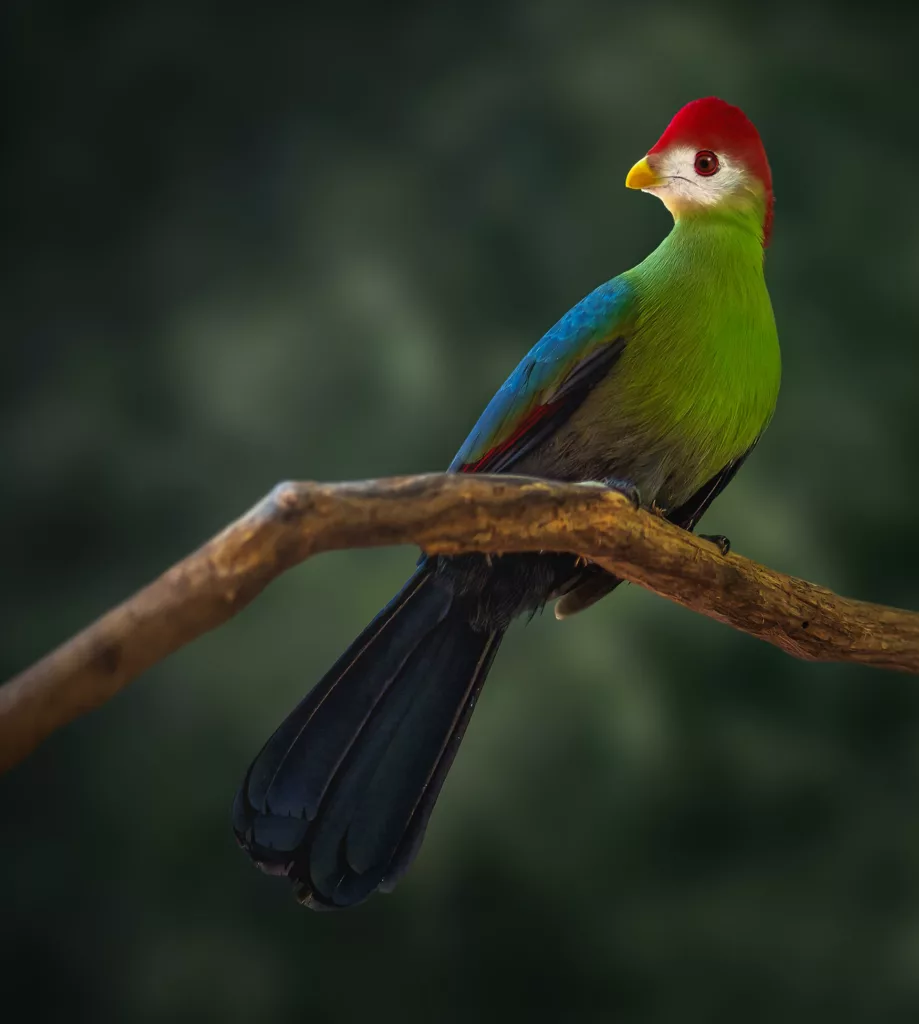
Red-crested turaco
Scientific name: Tauraco erythrolophus
IUCN listed as: Least Concern
Learn before you visit!
Here are some facts about the species – Discover what they eat, find out about their natural habitat, see what they like to do, and more… Set the reading style to suit you too, everyday speak or something aimed towards children.
Child-friendly
Everyday
Diet
The Red-Crested Turaco primarily consumes fruits, which form the bulk of its diet. In addition to fruits, they also eat flowers, leaves, and occasionally small invertebrates like insects. Their diet allows them to play a crucial role in seed dispersal, benefiting the forest ecosystem. The turaco’s digestive system is specially adapted to process a variety of plant materials, extracting maximum nutrition. This varied diet supports their active lifestyle, whether they are foraging in the treetops or gliding between branches.
The Red-Crested Turaco loves eating fruits the most. They also nibble on flowers, leaves, and sometimes insects. This helps them stay healthy and active. By eating different plants, they help spread seeds, which is good for the forest.
Breeding
Red-Crested Turacos are monogamous, forming long-term pairs. They build their nests from twigs in dense foliage, creating a secure environment for their eggs. Females usually lay 2 to 3 eggs, which both parents help to incubate for about 21 to 24 days. After hatching, the chicks are fed and cared for by both parents, and sometimes by other flock members, until they fledge at around four weeks old. This cooperative breeding strategy increases the survival rate of the young.
Red-Crested Turacos stay with one mate for life. They make nests from twigs in trees and lay 2 to 3 eggs. Both parents take turns keeping the eggs warm. When the babies hatch, they get fed by their parents and other birds in the group.
Habitat
The Red-Crested Turaco is native to the forests and savannahs of Angola in West Africa. They prefer areas with dense foliage where they can easily hide and find food. These birds are highly adapted to a life in the trees, with strong legs for hopping between branches and semi-zygodactylous feet that aid in climbing. Habitat destruction poses a significant threat to their populations, as it reduces the availability of nesting and feeding sites. Conservation efforts are crucial to preserving their natural habitats.
Red-Crested Turacos live in the forests and grasslands of Angola, Africa. They like places with lots of trees to hide and find food. Their strong legs and special feet help them climb trees. Cutting down trees can make it hard for them to find homes and food.
At the zoo
Red-Crested Turacos are popular in zoos due to their vibrant colours and social nature. Zoos provide environments that mimic their natural habitat, with plenty of trees for climbing and space for flying. These birds thrive in captivity when given a diet similar to what they eat in the wild and opportunities for social interaction. Educational programs in zoos often feature turacos to teach visitors about their role in the ecosystem and the importance of conservation efforts. Their presence helps raise awareness about habitat destruction and the need for wildlife protection.
Red-Crested Turacos are fun to watch in zoos because they are colourful and active. Zoos give them lots of trees to climb and space to fly. They eat fruits and veggies, just like in the wild. Zoos also teach people about protecting these birds and their homes.
Behaviour
Red-Crested Turacos are known for their social and active behaviour. They often form small flocks and communicate with a variety of calls. These birds are excellent climbers and can run along branches with agility. During flight, their bright red wing feathers become visible, creating a stunning display. Their social structure and cooperative behaviour, especially during breeding, demonstrate complex social dynamics and adaptability.
Red-Crested Turacos like to be with other turacos and are very lively. They talk to each other with different sounds. They are great at climbing trees and can run along branches. When they fly, you can see their bright red wings, which look amazing.
Fun facts
- Copper Feathers: Their red feathers contain a rare copper pigment called turacin.
- Green Pigment: They possess turacoverdin, one of the few true green pigments found in birds.
- Unique Feet: They have semi-zygodactylous feet, allowing versatile movement.
- Long Lifespan: In captivity, they can live up to 9 years.
- Social Birds: They form flocks of up to 30 individuals.
- Copper Feathers: Their red feathers have a special copper colour.
- Green Colour: They have a rare green colour called turacoverdin.
- Cool Feet: Their feet can move in different ways to help them climb.
- Long Lives: They can live up to 9 years in zoos.
- Flock Fun: They like to hang out in groups of up to 30 birds.
More animals to discover at our zoo
Quick Links
Tickets & Prices
You can buy tickets for Exmoor Zoo securely online, as well as finding out more price options, discover offers, and more…
What’s on…
Exmoor Zoo hosts incredible Events all through the year. You can find out about what we’ve got in store here…
Routes & info
Like any great discovery, Exmoor Zoo can feel a little off the beaten path – but don’t worry – you can plan your journey with our recommended routes and other useful travel info.
